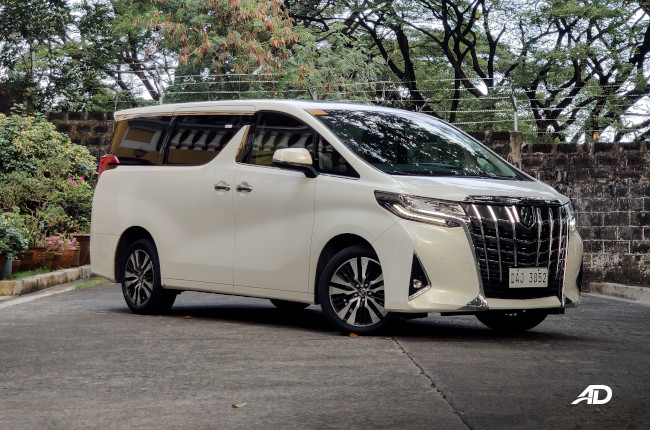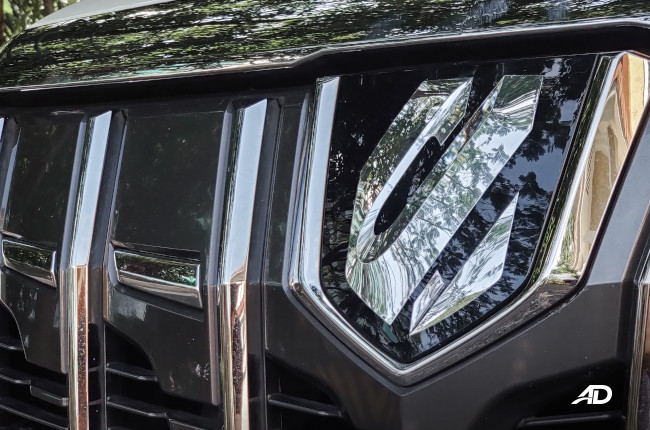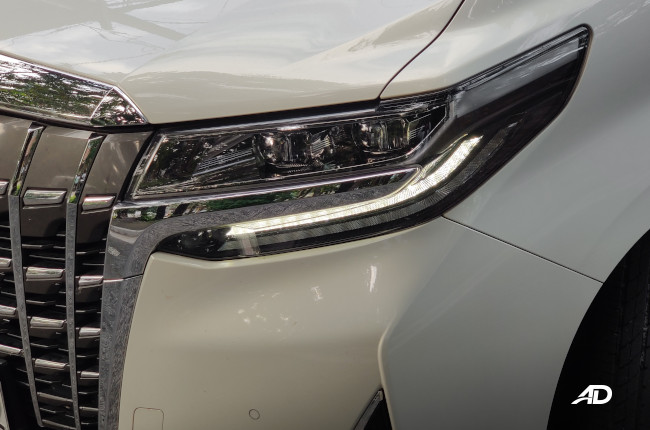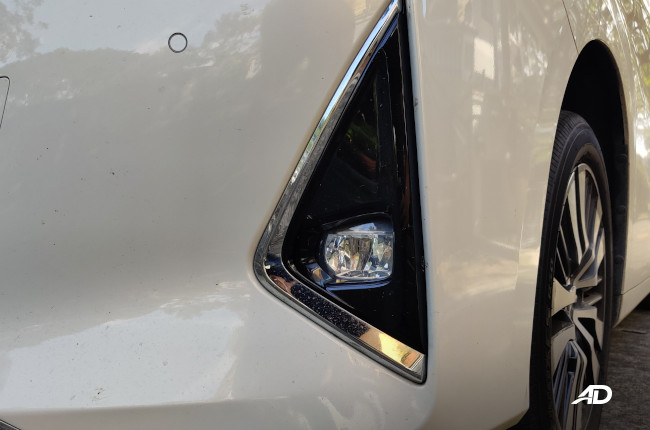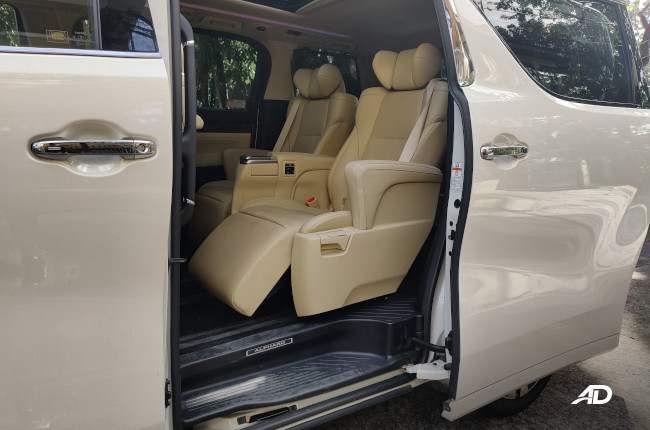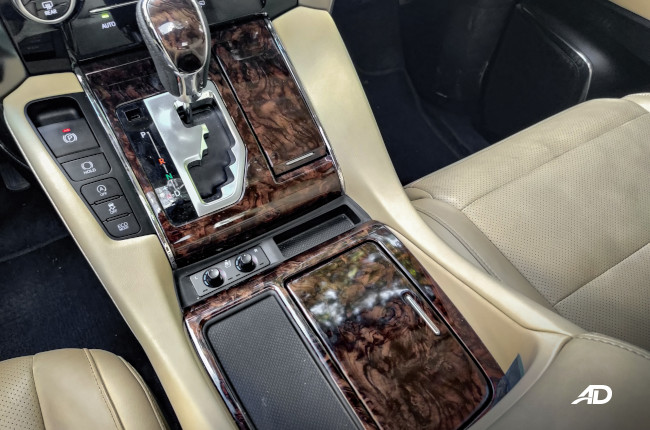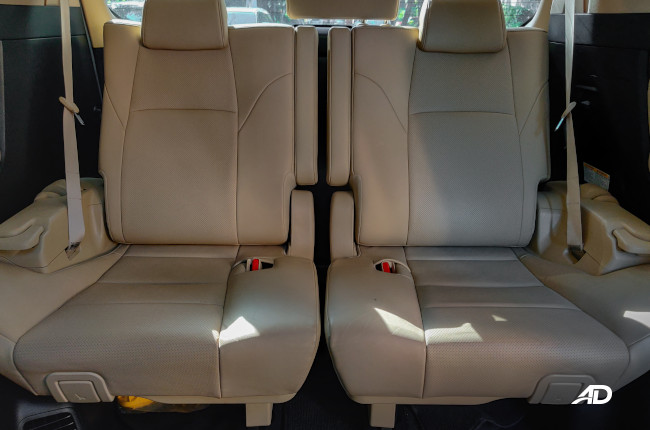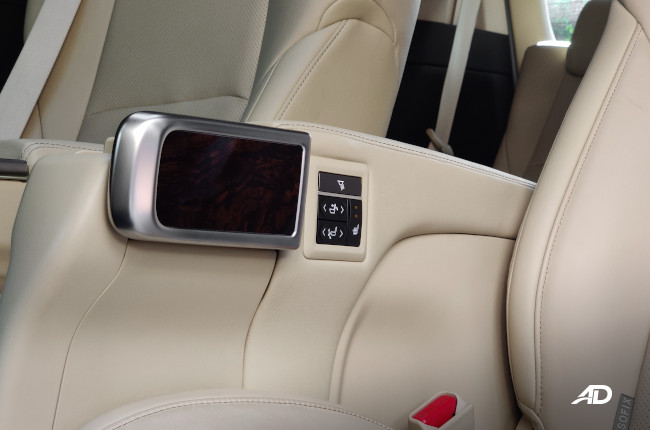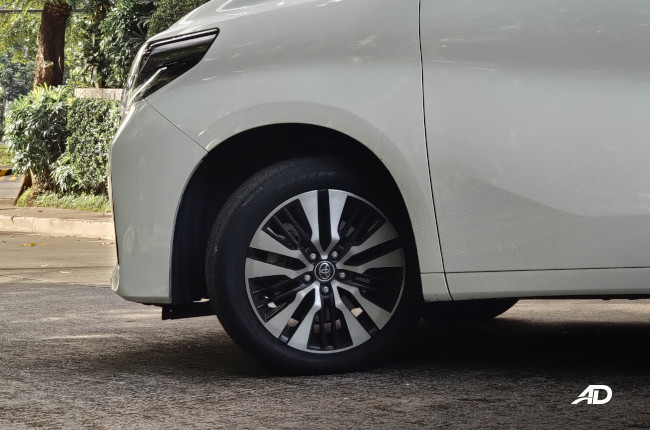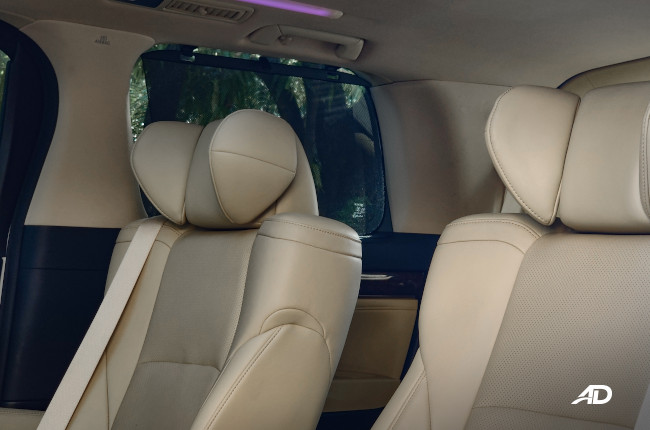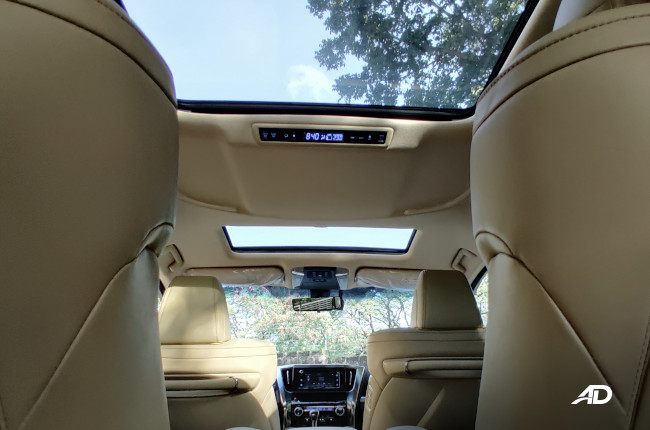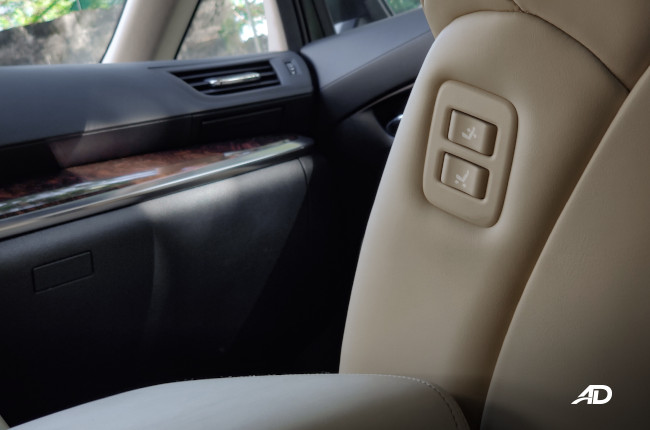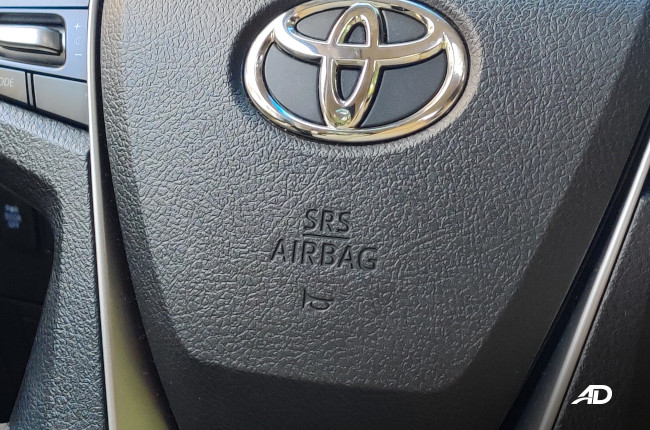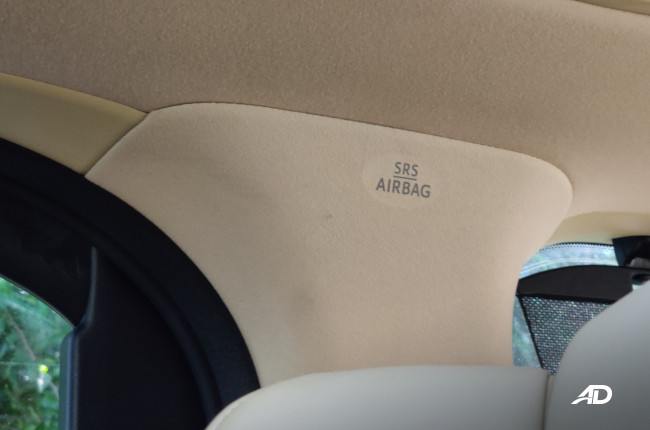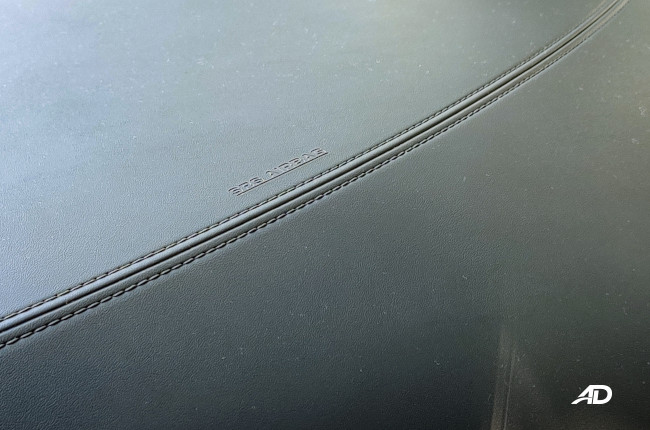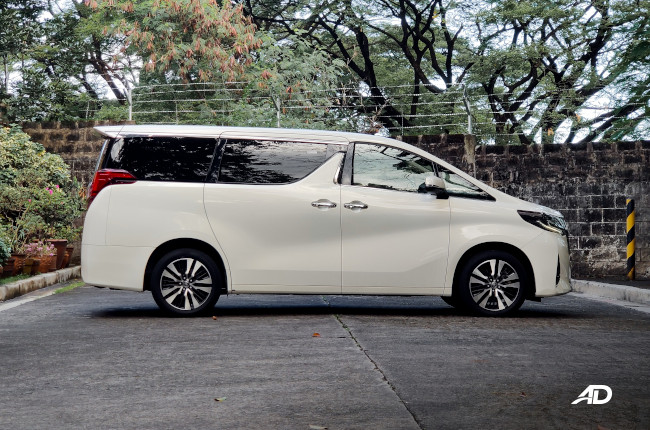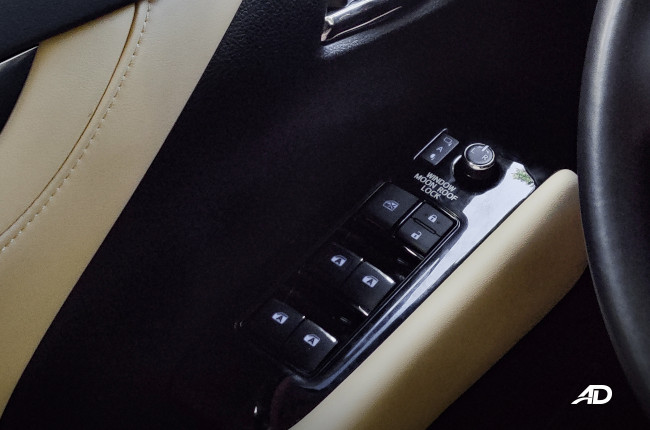
Contents
Pull up to a hotel, casino, country club, or the AutoDeal office, and you may find a Toyota Alphard just sitting there with its VIPs lounging in the back seat. It’s ubiquitous on the streets of Metro Manila, and notorious for being the choice vehicle for elite families on the way to their Sunday outing.
I had the pleasure of being a driver for several VIPs in my life which include parents, grandparents, bosses, bosses of my bosses, and the biggest boss of them all, the girlfriend. All of them rode this minivan with no complaint, except for the occasional “slow down” or “Ops ops ops” being said as I drove. Everyone wants an Alphard, even the big wigs in the AutoDeal office were bantering on about buying one as a “company car.” What’s the big deal? Why the long line? Is the hype real? Let’s find out.
Engine Output (HP), Acceleration, Transmission, Handling 5.0/5
Exterior & Interior Design, Quality, Fit and Finish, Ergonomics 5.0/5
Cabin Comfort, Suspension, NVH Insulation 4.5/5
Convenience Technologies, Active and Passive Safety Features 3.0/5
Amount of the vehicle you get for the price, Fuel Efficiency 3.0/5
- Supreme ride comfort
- Lighting systems perform admirably
- Refined exterior styling
- Dated infotainment system
- Lacking technology features
- Expensive
Exterior
The majority of the Alphards you’ll see out on the road comes in white, and it is a beautiful color. It’s not pure unadulterated white, but it has a hint of pearl in it. It does well to add to the already elegant exterior of the minivan. It may be a box, but boy is it one of the nicest boxes you’ll see. It’s a far cry from the previous-generation. The vehicle is sleek and even looks a little aerodynamic with its nose and curves.
Instead of a Toyota logo upfront, you have the “alpha” symbol on the intricate grille. It’s a nice touch that meshes nicely with the rest of the front features. Flanking this centerpiece are the two LED headlights that have auxiliary turn lights that open and close imperceptibly whenever the wheel is turned or a turn signal is activated. It illuminates the outer edges of the vehicle to improve side to side visibility. Another lovely trick that the Alphard has is the turn signal indicators. Instead of just flashing, a row of LED lights fires sequentially, making for a very visually interesting effect.

The side has a subtle character line that disappears if you’re not intently looking at it. The rear also uses LEDs and is the curviest part of the rear, since the back-end is so boxy. The vehicle has a nice shape that has been smoothed out over time. Much like a sculpture, Toyota has slowly crafted this vehicle into what it is now.
Interior
It’s what’s on the inside that counts, and that statement rings especially true for the Alphard. The Toyota Camry has an interior that is quite nice to be in, but that looks like economy class compared to the Alphard’s business-class-like seating. Back when the model was initially launched in the Philippines, the Alphard’s claim to fame was its uber-comfortable captains’ chairs. This time around, it’s heated and has a motorized recline and leg rest. There’s much space, mood lights, and rear climate control. Everything but the deployable table in the center doesn’t wobble, and pretty much all facets are well built. Oddly, the middle row captains’ chairs lack cooled seats, which would have made sense for the Philippines.
There is a rear bench present, which can stow away to the sides if you need cargo space. When fully deployed, the car can seat up to 7 people, but when you need to haul some items, only four people will be able to sit comfortably. Side-to-side cargo space is a bit of an issue, however, which means that wider items might not fit.
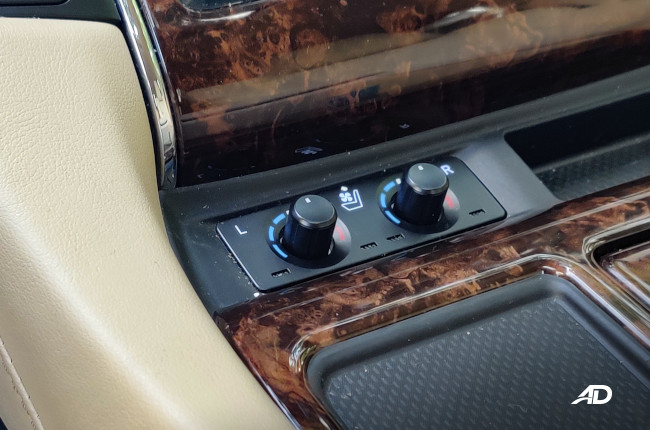
The front seats of the Alphard are often overlooked, but the driver and passenger get heated and cooled seats, while the passenger gets a leg rest which makes riding shotgun quite okay. The beige color and wood accents may suit older audiences better, but even I have to say that it complements the Alphard well. There are piano black plastics sprinkled around the front, but not much in the rear, where it counts.
Comfort
Five stars. Ten out of ten. Perfection. Those are the words we would use to describe the Alphard's comfort, if not for one little nitpick. Now, you can doze off in the back of this thing, no problem. Independent suspension all around makes for a highly comfortable ride. This thing is really a magic carpet on the streets of Metro Manila. If you don’t fancy that term, I prefer to call it a steam roller because it just smooths out almost any imperfection on the road within reason. The NVH insulation is also superb and the best in its class. It’s almost silent and the engine runs smoothly and quietly.
One minor nitpick for the car contradicts its comfort, as the vehicle bottoms out quite a bit when it is fully-loaded. Ground clearance is a bit on the low side, so if you’re not careful, you could just end up scraping the pavement from time to time, though it’s nothing that’ll happen too often I can assure.
Technology

Let’s just say that the Alphard doesn’t have tech that matches up with its price tag and its premium quality. The head unit is adequate and has basic connectivity options covered with AUX, USB, and Bluetooth. It has an 8-speaker audio system which is fair for the size of the cabin.
Creature comforts in the cabin include motorized driver and passenger seats, while the captains’ chairs come with a motorized recline and leg rest. Keyless entry allows for a seamless ingress and egress, as well as remote control of the automatic doors and power tailgate which is a neat party trick that can impress your parents or your bosses. There is a two-tier panoramic sunroof, with a large pane of glass reserved for the rear. This makes for a cabin that has a lot of open air. There is an electronic parking brake with brake hold and auto-start stop which also help it sit steady and consume less fuel while stopped.
A lot of things are missing with this premium car. There is no backup camera present, but there are parking sensors all around the car. There may be two 12V sockets, but the rear portion of the cabin is devoid of any USB plug or power outlet. Cruise control is present, but it’s just a normal system and not adaptive. See a pattern? It’s there, but in my honest opinion, it’s not enough especially with regard to the lack of amenities in the rear.
Safety
Toyota does have a total of 7 airbags that cover the entirety of the interior. An ABS system with electronic brakeforce distribution is also present with brake assist. This unit also comes equipped with traction and stability control as well as a hill-start assist system.
Overall, passive safety systems are more than adequate, while the minivan is missing many active systems that more updated models come with, like active cruise control.
Driving & Handling

Prior to the review period, I would have undoubtedly sat in a captain’s chair without a second thought, but now that I’ve driven one, I wouldn’t be so against the idea of driving this minivan. With its monocoque chassis, the handling dynamics are quite stellar for a car of this size. The wheels are planted going over bumps, changing lanes, and even at speed. Taking tight turns in the city is easy once you get used to the extra length. It’s about as long as an SUV but with a lot less ground clearance, so there is less body roll through the corners. It’s not a sedan in terms of handling, but it can turn the only way an Alphard knows how – comfortably within reason.

The engine comes straight out of a V6 Camry, or a Lexus IS 350. The 2GR line of engines is known for its capability, and that rings through with the 3.5L in the Alphard. Capable of 292 hp and 361 Nm of torque mated to a 6-speed automatic transmission which outputs to the front wheels, the Alphard goes from 0-100 km/h in around 8.3 seconds. That’s not bad considering that it weighs over two tons. Even though it performs stellarly, it is dead silent and silky smooth when you need it to be, making it a double-edged sword.
Fuel Economy

Let me preface this by saying, it’s a heavy car with a 6-cylinder engine. So no surprise, I was only able to get 5 km/L while in bumper to bumper heavy city traffic. When things cleared up, however, the number went up to about 7 km/L with an average speed of about 40 km/h. On the highway, however, unimpeded by weight, I managed 13 km/L at 80 km/h.
The Alphard’s engine does indeed guzzle quite a bit, but the saving grace is that it comes with a 75L gas tank, which can cost an arm and a leg to refill at times.
Verdict

A week with the Alphard has made me a bit disappointed. As tested, the Luxury White Pearl variant costs P3,755,000, which is considerably steep for a model with many missing features. A backup camera should come as standard and there should be more charging ports for the rear passengers. I also expected a better head unit, or even a 360-degree camera for the price point that this car commands because other brands that have minivans do make it a point to equip their cars with at least a backup camera.
But why would you buy an Alphard? It’s pretty expensive, there is a waiting list, and it’s pretty ill-equipped, so this car shouldn’t be so high on people’s wish list, right? Humans are pretty weird, and often we go off of each other’s recommendations and impressions. As I’ve stated, the Alphard is ubiquitous and is one of the better-known pioneers of the captain’s chair craze that has got even the Hiace Super Grandia upgrading its pair of chairs.
But here’s the thing, no matter how much I berate the Alphard and its lack of features, I have no complaints about the performance and ride. When you buy this car, you buy it as a passenger. When you buy this car, you buy refinement. When you buy this car, you buy a recognizable nameplate. When you buy this car, you buy a Toyota, and that is worth its weight in resale. Honestly, a lot of Toyota cars have a steep asking price, but then again, so do second-hand models.
Exterior Photo Gallery
Interior Photo Gallery
Specifications
Engine
3.5 LFuel Type
GasolinePerformance
292 hp @ 6,200 rpmTransmission
Automatic-
Summary
-
Name Toyota Alphard 3.5 AT (Luxury White Pearl) Body Type Minivan Price ₱4,175,000 Transmission Category Automatic -
Engine
-
Engine Size 3.5 L Displacement 3,456 cc Number of Cylinders 6 Number of Valves 24 Transmission Type 6-Speed Automatic -
Performance
-
Drivetrain Front-Wheel Drive Max Output (hp) 292 hp @ 6,200 rpm Max Torque (nm) 361 Nm @ 4,700 rpm -
Economy & Environment
-
Fuel Type Gasoline Emissions Standard n/a Fuel Capacity 75.0 L *Combined Fuel Consumption 10.9 km/L *brand manufacturer claim
-
Dimensions
-
Length 4,915 mm Width 1,850 mm Height 1,980 mm Wheelbase 3,000 mm Turning Circle 10 m Ground Clearance 160 mm Trunk Capacity 147 L Number of Doors 5 Number of Seats 7 -
Safety & Security
-
Driver's Airbag 1 Front Passenger's Airbag 1 Side Airbag 2 Curtain Airbag 2 Knee Airbag 1 Auto Brake System Electronic Brake Distribution Anti-lock Brake System (ABS) With Electronic Brake Force Distribution
Immobilizer Security Alarm Stability Control Electronic Door Locks Speed Sensing Door Locks ISOFIX Lane Departure Warning System Blind-Spot Detection System -
Features
-
Cruise Control Front Parking Sensors Rear Parking Sensors Leather Upholstery Push Start Button Wheel Size 18 in Wheels Metal Type Alloy Airconditioning System Auto Aircon with Nanoe and Auto Recirculation Entertainment System 9-inch Display Audio Connectivity AM/FM, Bluetooth,USB, AUX, Voice Command, AppleCarPlay, and Android Auto Navigation Ready Warranty 3 Years (100,000 km) Keyless Entry Roof Rack Sunroof Electric Adjustable Seats Power Steering Power Windows Power Outlet Steering Wheel Audio Control -
Technology
-
Active Park Assist Hill Start Assist AWD Modes n/a Tire Pressure Monitoring Heads-up Display Power Liftgate Start-stop System
Colors
Latest Review
-
2025 BAIC B30e Dune 4x4 HEV Review / Review
After 1,000 km behind the wheel of the BAIC B30e Dune, we share what we loved about this hybrid and what we don’t.
4.2 / 5 -
2025 MG G50 Plus Lux DCT Review / Review
Can affordable price and VIP aspirations blend together? We find out in this review of the MG G50 Plus Lux DCT.
4.0 / 5 -
2025 BYD Seal 5 DM-i Premium Review / Review
We test-drove the BYD Seal 5 DM-i, and its features and affordable price make it a strong hybrid sedan contender.
4.2 / 5
Popular Articles
-
Cheapest cars under P700,000 in the Philippines
Jerome Tresvalles · Sep 02, 2024
-
First car or next car, the Ford EcoSport is a tough package to beat
Jun 18, 2021
-
Car Maintenance checklist and guide – here’s everything you need to know
Earl Lee · Jan 12, 2021
-
Most fuel efficient family cars in the Philippines
Bryan Aaron Rivera · Nov 27, 2020
-
2021 Geely Okavango — Everything you need to know
Joey Deriquito · Nov 19, 2020
-
Family cars in the Philippines with the biggest trunks
Sep 20, 2023
-
Head to head: Toyota Rush vs. Suzuki XL7
Joey Deriquito · Oct 28, 2020
-
Why oil changes are important for your car
Earl Lee · Nov 10, 2020
-
2021 Kia Stonic — What you need to know about it
Joey Deriquito · Oct 16, 2020
-
Top 7 tips for buying a used car in the Philippines
Joey Deriquito · Nov 26, 2020



